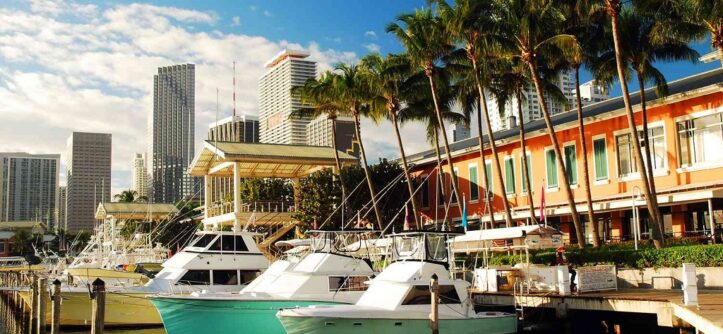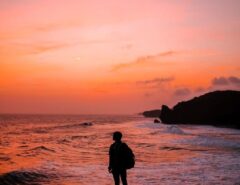Miami-Dade County is a paradise for water enthusiasts, offering a stunning network of inland waterways that weave through vibrant cities, lush mangroves, and serene natural landscapes. Whether you’re a local or a visitor, exploring the Miami Dade inland waterways with resources like FAQ Miami provides an unforgettable way to experience the region’s beauty. From kayaking and paddleboarding to boating and fishing, these waterways offer endless opportunities for adventure and relaxation. This guide covers the best routes, access points, and practical tips to help you navigate Miami-Dade’s inland waterways with ease.
Why Explore Miami-Dade’s Inland Waterways?
The inland waterways of Miami-Dade County are a unique blend of urban and natural environments. Stretching across canals, rivers, and creeks, these waterways connect neighborhoods, parks, and wildlife preserves. They provide a peaceful escape from the bustling city while showcasing Miami’s diverse ecosystems. Whether you’re seeking a leisurely paddle or a thrilling boat ride, the waterways cater to all skill levels and interests. Additionally, they offer a glimpse into the region’s history, culture, and environmental significance, making them a must-visit for anyone in South Florida.
Top Routes for Exploring Miami-Dade Inland Waterways
Miami-Dade’s inland waterways include numerous routes, each with its own charm. Below are some of the most popular and accessible paths for boaters, kayakers, and paddleboarders.
Oleta River
The Oleta River, located in North Miami Beach, is a favorite for kayakers and canoeists. This scenic waterway winds through mangrove forests and leads to Biscayne Bay. Paddlers can enjoy calm waters and spot wildlife like manatees, herons, and fish. The Oleta River State Park offers easy access with rental facilities and launch points. For a longer adventure, follow the river to the Intracoastal Waterway, where you can explore further into the bay.
Little River
The Little River, flowing through Miami’s urban core, offers a mix of city views and natural beauty. This route is ideal for those who want to combine urban exploration with water-based recreation. Launch from Manatee Bend Park or nearby access points, and paddle through quiet waters lined with mangroves and residential areas. The river connects to larger canals, providing opportunities for extended trips.
Coral Gables Waterway
The Coral Gables Waterway is a picturesque network of canals that showcases Miami’s Mediterranean-inspired architecture. Perfect for leisurely boating or paddleboarding, this route offers views of historic homes and lush greenery. Access points like the Cocoplum Circle boat ramp make it easy to start your journey. Be mindful of private docks and follow waterway regulations to ensure a safe experience.
Black Creek
Located in South Miami-Dade, Black Creek is a hidden gem for nature lovers. This tranquil waterway flows through Black Point Park and Marina, offering a peaceful escape surrounded by mangroves and wildlife. Kayakers and anglers frequent this route for its calm waters and abundant fish. The creek also connects to Biscayne Bay, making it a great starting point for longer coastal adventures.
How to Access the Inland Waterways
Accessing Miami-Dade’s inland waterways is straightforward, thanks to numerous public launch points and parks. Below are key tips to help you get started.
Public Launch Points
Miami-Dade County maintains several public boat ramps and kayak launches. Popular spots include Oleta River State Park, Black Point Park and Marina, and Matheson Hammock Park. These locations offer parking, restrooms, and equipment rentals for convenience. Always check for parking fees or permit requirements before heading out. For detailed information on launch points, visit authoritative sources like the Miami-Dade County Parks website.
Rentals and Guided Tours
If you don’t own a kayak, canoe, or boat, rentals are widely available. Many parks, such as Oleta River State Park, offer hourly or daily rentals for kayaks and paddleboards. Guided tours are another excellent option for beginners or those wanting to learn about the area’s ecology and history. Local outfitters provide knowledgeable guides who can lead you through the best routes while sharing insights about the waterways.
Private Docks and Marinas
For boaters with their own vessels, private marinas like those in Coconut Grove or Coral Gables offer docking and launch facilities. However, always verify access rules, as some marinas require memberships or fees. Respect private property and adhere to posted signs to avoid trespassing.
Tips for a Safe and Enjoyable Experience
Navigating Miami-Dade’s inland waterways is rewarding, but preparation is key to a safe and fun outing. Here are essential tips to ensure a great experience.
Check Weather and Tides
South Florida’s weather can change quickly, so always check the forecast before heading out. Tides also affect water levels, especially in canals and rivers connecting to Biscayne Bay. Use apps like NOAA Weather or local tide charts to plan your trip. Avoid strong currents or stormy conditions to stay safe.
Bring Essential Gear
Pack sunscreen, water, snacks, and a first-aid kit for any water-based adventure. Wear a life jacket at all times, as required by Florida law for non-motorized vessels. A waterproof bag for electronics and a hat for sun protection are also recommended. For longer trips, consider a marine radio or GPS device for navigation.
Respect Wildlife and the Environment
Miami-Dade’s waterways are home to diverse wildlife, including manatees, dolphins, and various bird species. Keep a safe distance from animals and avoid disturbing their habitats. Additionally, follow “leave no trace” principles by packing out all trash and avoiding single-use plastics. Protecting the waterways ensures they remain pristine for future visitors.
Know the Rules
Familiarize yourself with local boating regulations, available through resources like the Florida Fish and Wildlife Conservation Commission. Speed limits, no-wake zones, and right-of-way rules apply in many areas. Kayakers and paddleboarders should stay visible to larger vessels and avoid busy channels during peak hours.
Best Times to Explore
The best time to explore Miami-Dade’s inland waterways depends on your preferences. Fall and winter (October to April) offer cooler temperatures and lower humidity, making for comfortable outings. Early mornings provide calm waters and fewer crowds, ideal for paddling or fishing. Summer trips are popular but require extra precautions due to heat and frequent afternoon storms. Regardless of the season, always plan around weather conditions for a safe experience.
Combining Waterways with Local Attractions
Exploring the inland waterways pairs perfectly with Miami-Dade’s other attractions. After a morning paddle on the Oleta River, visit nearby Greynolds Park for a picnic or hike. In Coral Gables, combine a canal tour with a visit to the historic Biltmore Hotel or Venetian Pool. For a full day of adventure, paddle Black Creek and then relax at Zoo Miami, located just a short drive away. These combinations enhance your experience and showcase the region’s diverse offerings.
Read More Also: How to Learn Basic Bookbinding: A Step-by-Step Beginner’s Guide
Conclusion
Miami-Dade’s inland waterways offer a unique way to experience the region’s natural beauty, history, and culture. From the mangrove-lined Oleta River to the urban charm of the Coral Gables Waterway, there’s a route for every adventurer. With accessible launch points, rental options, and guided tours, exploring these waterways is easier than ever. By following safety tips, respecting the environment, and planning your trip, you can enjoy a memorable outing. Whether you’re a seasoned boater or a first-time kayaker, the Miami-Dade inland waterways promise an unforgettable journey.
Read More Also: Keep on Rolling: How Routine Truck Upkeep Protects Your Schedule and Wallet
Frequently Asked Questions
What are the best waterways for beginners in Miami-Dade?
The Oleta River and Coral Gables Waterway are ideal for beginners due to their calm waters and easy access points. Rentals and guided tours are available for added support.
Do I need a permit to use the inland waterways?
No permit is required for non-motorized vessels like kayaks or paddleboards. However, motorized boats may require registration or permits, depending on size and usage.
Are the waterways safe for swimming?
Swimming is not recommended in most inland waterways due to strong currents, boat traffic, and potential wildlife hazards. Stick to designated swimming areas like beaches or pools.
Can I fish in Miami-Dade’s inland waterways?
Yes, fishing is popular in waterways like Black Creek and the Oleta River. A Florida fishing license is required for anglers over 16. Check regulations for catch limits.
What wildlife might I see while exploring?
You may encounter manatees, dolphins, herons, egrets, and various fish species. Always observe wildlife from a distance to avoid disturbing them.






Leave a Reply